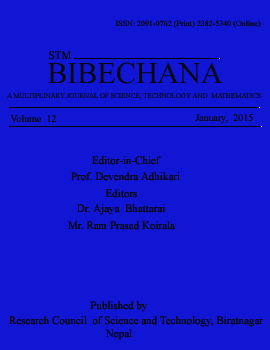A Study of co-existence between the Hubble flow and the random alignments of spin vectors of SDSS galaxies
DOI:
https://doi.org/10.3126/bibechana.v12i0.11787Keywords:
Supercluster – galaxies, evolution – galaxies, statistics – galaxies, general -- astronomical databases.Abstract
We present a study of spin vector orientation of 14,118 SDSS (Sloan Digital Sky Survey) galaxies having redshift in the range 0.19 to 0.20 (radial velocity 57,000 km/s to 60,000 km/s) with respect to galactic coordinate system using 7th data release (2008, October). These galaxies were observed through SDSS telescope of Apache Point Observatory located at New Mexico, USA. The photometric database is made available through our collaboration with institute of Astro-particle physics, Innsbruck University, Austria. We used the `Godlowskian' method to convert two dimensional data to three dimensional galaxy rotation axes. Our intension is to find out non-random effects in the spatial orientation of galaxies and to check redshift dependence. The expected isotropy distribution curves are obtained by removing the selection effects and performing a random simulation method. The observed and expected polar and azimuthal angle distributions are compared by using three statistical tests- chi-square, auto-correlation and the Fourier. It is found that the spatial orientation of galaxies tend to be oriented randomly with respect to the galactic coordinate system, supporting hierarchy model of galaxy evolution. In few cases we noticed a preference, probably due to the gravitational shearing or tidal effects in the large scale structure. In general, redshift is found to be independent of orientation. Hence, a very good correlation between the Hubble flow (redshift) and the random alignments of spin vectors of SDSS galaxies is noticed.
DOI: http://dx.doi.org/10.3126/bibechana.v12i0.11787
BIBECHANA 12 (2015) 114-127
Downloads
Downloads
Published
How to Cite
Issue
Section
License
This license enables reusers to distribute, remix, adapt, and build upon the material in any medium or format for noncommercial purposes only, and only so long as attribution is given to the creator.




